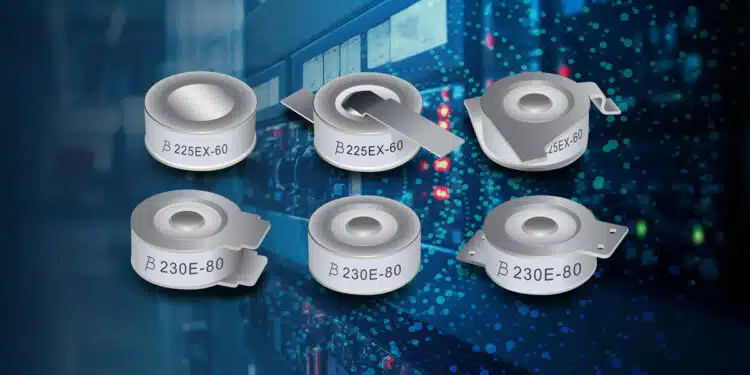Bourns, Inc., a leading manufacturer and supplier of electronic components for power, protection, and sensing solutions, announced the addition of two very high current 2-electrode gas discharge tube (GDT) over-voltage protection component series to its high energy GDT family.
The Bourns® Model GDT225EX and GDT230E Series are designed to deliver extremely elevated energy surge protection for AC and DC power line designs.
These high-energy GDT over-voltage protection components meet the enhanced requirements for international IEC lightning protection zones, UL 1449, and IEC 61643-11 standards, making them ideal protection solutions for a growing group of existing and next-generation applications that are frequently subjected to excessive current surges.
Setting a new level of surge protection for high power designs, the two model series offer an impressive list of features. Bourns® Model GDT225EX Series features a maximum surge rating of 120 kA on an 8/20 μs waveform and is housed in a compact 20 mm diameter flat configuration. The Model GDT230E Series provides a maximum surge rating of 160 kA in a 30 mm diameter flat configuration.
Both models offer DC breakdown voltage options from 500 V to 800 V, providing reliable protection for compact AC power line applications, while ensuring compatibility with most common AC voltage system configurations. The new series also gives designers additional versatility in terms of providing options for diverse voltage configurations in low voltage networks without having to compromise surge protection performance.
“Our customers look to Bourns for continued protection component innovation that is able to meet their evolving requirements. With the introduction of our GDT225EX and GDT230E Series, Bourns continues this commitment. These additions not only enhance our portfolio with exceptional surge protection capabilities in a compact design, but also match strategic emerging market application specifications for ever-higher power protection,” said David Chavarría, GDT/SPD Product Line Manager at Bourns.
Bourns® Model GDT225EX and GDT230E Series 2-electrode high energy GDTs are available now and are RoHS compliant* and UL recognized.
Features
- Fast response time
- Wide operating temperature range
- High surge current rating
- Low capacitance and insertion loss
- Stable performance throughout life
- Small surface mount package
- RoHS compliant
Applications
- Surge Protective Devices (SPDs)
- Power systems
- Industrial equipment
































